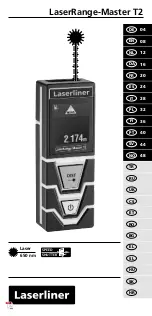
test results when employed on much higher inductance’s than the original, highly successful
Baker AWA-IV surge test circuit.
Using the Hi L technique
The Hi L technique can be used to test DC shunt or compound motor insulation, evaluate
shunt fields, and test interpoles
Fully testing DC shunt or compound motors with the Baker AWA-IV requires some additional
programming and consideration of the motor in terms of its separate windings.
Knowing that the separate windings can operate at different voltages helps determine
appropriate test voltages. Because there are separate windings, test IDs need to be tailored
to the windings
An effective method of performing this test sequence is to program two test IDs, each being
selected once during the test sequence of the DC motor.
#1 Test ID armature
Armatures can be low inductance and very low resistance. They can also be vulnerable to
surface contamination due to brush carbon or other materials. A suitable test ID should
include:
1) Temperature correction
2) Kelvin resistance-with two leads selected
3) Meg-Ohm, with a suitable value of pass/fail for meg-ohm value defined.
4) DA/PI test, with a suitable value of pass/fail defined
5) DC Test, such as the DC hipot
6) Standard Surge test-with two leads selected, by virtue of two leads resistance
#2 Test ID field
Shunt fields are generally high inductance, quite higher in resistance, and arranged in pairs.
Using the Hi L technique could result in more sensitive evaluation characteristics.
1) Temperature correction
2) Kelvin resistance-with two leads selected
3) Meg-Ohm, with a suitable value of pass/fail for meg-ohm defined
4) DA/PI test, with a suitable value of pass/fail defined
5) DC test, such as the DC hipot
6) Surge test-with two leads selected, by virtue of two leads resistance, and Hi L
selected
NOTE
Hi L technique is only selected for the shunt fields!
Fine tuning the technique
40HP DC motor, straight shunt, 500V armature, 300V field. Motor leads marked F1, F2 and
A1, A2. These are the shunt field leads (F1,F2) and armature leads (A1,,A2)
104
SKF Static Motor Analyzer—Baker AWA-IV User Manual
Special features of the Baker AWA-IV
Содержание AWAIV-12
Страница 1: ...SKF Static Motor Analyzer Baker AWA IV User manual ...
Страница 2: ......
Страница 14: ...xii SKF Static Motor Analyzer Baker AWA IV User Manual Table of Contents ...
Страница 16: ...2 SKF Static Motor Analyzer Baker AWA IV User Manual About this manual ...
Страница 28: ...14 SKF Static Motor Analyzer Baker AWA IV User Manual Baker AWA IV Instrument Overview ...
Страница 88: ...74 SKF Static Motor Analyzer Baker AWA IV User Manual Database management and maintenance ...
Страница 90: ...76 SKF Static Motor Analyzer Baker AWA IV User Manual Set up of the Baker AWA IV analyzer ...
Страница 91: ...SKF Static Motor Analyzer Baker AWA IV User Manual 77 Set up of the Baker AWA IV analyzer ...
Страница 92: ...78 SKF Static Motor Analyzer Baker AWA IV User Manual Set up of the Baker AWA IV analyzer ...
Страница 124: ...110 SKF Static Motor Analyzer Baker AWA IV User Manual Special features of the Baker AWA IV ...
Страница 166: ...152 SKF Static Motor Analyzer Baker AWA IV User Manual Typical winding faults ...
Страница 180: ...166 SKF Static Motor Analyzer Baker AWA IV User Manual ...
Страница 181: ...SKF Static Motor Analyzer Baker AWA IV User Manual 167 ...
Страница 182: ...168 SKF Static Motor Analyzer Baker AWA IV User Manual ...
Страница 194: ...180 SKF Static Motor Analyzer Baker AWA IV User Manual Using the Baker ZTX with Baker AWA IV analyzers ...
Страница 210: ...196 SKF Static Motor Analyzer Baker AWA IV User Manual ...
Страница 234: ...220 SKF Static Motor Analyzer Baker AWA IV User Manual ...
Страница 240: ...226 SKF Static Motor Analyzer Baker AWA IV User Manual Glossary ...
Страница 248: ...234 SKF Static Motor Analyzer Baker AWA IV User Manual Index ...
Страница 249: ......
















































